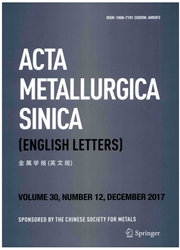

 中文摘要:
中文摘要:
Using a field equation with a phase factor, a universal analytic potential-energy function applied to the interactions between diatoms or molecules is derived, and five kinds of potential curves of common shapes are obtained adjusting the phase factors. The linear thermal expansion coefficients and Young's moduli of eleven kinds of fuce-centered cubic (fcc) metals - Al, Cu, Ag, etc. Are calculated using the potential-energy function; the computational results are quite consistent with experimental values. Moreover, an analytic relation between the linear thermal expansion coefficients and Young's moduli of fcc metals is given using the potential-energy function. Finally, the force constants of fifty-five kinds of diatomic moleculars with low excitation state are computed using this theory, and they are quite consistent with RKR (Rydberg-Klein-Rees) experimental values.
 英文摘要:
英文摘要:
Using a field equation with a phase factor, a universal analytic potential-energy function applied to the interactions between diatoms or molecules is derived, and five kinds of potential curves of common shapes are obtained adjusting the phase factors. The linear thermal expansion coefficients and Young's moduli of eleven kinds of face-centered cubic (fcc) metals - Al, Cu, Ag, etc. are calculated using the potential-energy function; the computational results are quite consistent with experimental values. Moreover, an analytic relation between the linear thermal expansion coefficients and Young's moduli of fcc metals is given using the potential-energy function. Finally, the force constants of fifty-five kinds of diatomic moleculars with low excitation state are computed using this theory, and they are quite consistent with RKR (Rydberg-Klein-Rees) experimental values.
 同期刊论文项目
同期刊论文项目
 同项目期刊论文
同项目期刊论文
 期刊信息
期刊信息
